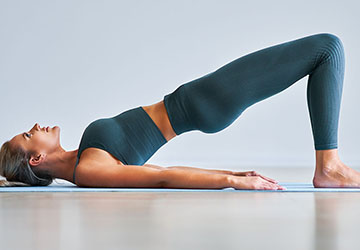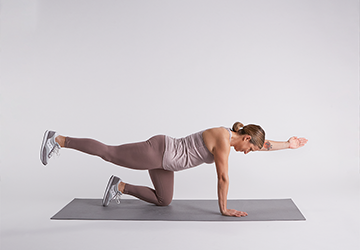What Are the Best Exercises for Lower Back Pain
Lower back pain is a common issue affecting people of all ages. It can stem from various causes, including poor posture, muscle strain, or underlying medical conditions. Regular exercise can be a powerful tool in managing and alleviating lower back pain. Here, we explore some of the best exercises that can help strengthen the lower back and reduce pain.
Lower back pain is a common issue affecting people of all ages. It can stem from various causes, including poor posture, muscle strain, or underlying medical conditions. Regular exercise can be a powerful tool in managing and alleviating lower back pain. Here, we explore some of the best exercises that can help strengthen the lower back and reduce pain.

Understanding Lower Back Pain
Lower back pain can be classified as acute, subacute, or chronic, depending on duration. Acute pain lasts a few days to a few weeks, subacute pain lasts 4 to 12 weeks, and chronic pain persists for 12 weeks or longer. Whatever the type, incorporating exercises into your routine can help manage the pain effectively.
The Role of Exercise in Managing Lower Back Pain
Exercise helps in several ways:
Strengthening Muscles: Strong muscles support the spine better.
Improving Flexibility: Flexible muscles reduce the risk of injury.
Enhancing Blood Flow: Better blood flow aids in the healing process.
Releasing Endorphins: Exercise can help reduce pain perception by releasing endorphins.
Best Exercises for Lower Back Pain
Cat-Cow Stretch
The Cat-Cow stretch is a gentle way to stretch and warm your spine. To do it, start on your hands and knees in a tabletop position. Inhale as you arch your back, lifting your head and tailbone toward the ceiling in the Cow pose. Then, exhale as you round your back, tucking your chin to your chest and pulling your belly button toward your spine in the Cat pose. Repeat this sequence for 10-15 repetitions, moving slowly and gently.
Child’s Pose
Child's Pose is a restful position that stretches the lower back. To do it, begin on your hands and knees. Sit back onto your heels while extending your arms forward, resting your forehead on the floor. Hold the position for 20-30 seconds and repeat 2-3 times.
Pelvic Tilts
Pelvic tilts help to strengthen the lower back and abdominal muscles. To do it, lie on your back with your knees bent and feet flat on the floor. Tighten your abdominal muscles and push your lower back into the floor. Hold for a few seconds, then relax. Repeat for 10-15 repetitions.
Bridges
Bridges strengthen the glutes and lower back. To do it, lie on your back with your knees bent and feet flat on the floor. Engage your core and raise your hips towards the ceiling, aligning your body in a straight line from shoulders to knees. Hold for a few seconds, then slowly lower your hips back to the floor. Repeat for 10-15 repetitions.
Knee-to-Chest Stretch
This stretch helps to relieve tension in the lower back. To do it, lie on your back with your knees bent and feet flat on the floor. Bring one knee to your chest, keeping the other foot on the floor. Hold for 20-30 seconds, then switch legs. Repeat 2-3 times for each leg.
Bird-Dog
Bird-Dog is a core exercise that improves stability and balance. To do it, start on your hands and knees in a tabletop position. Extend your right arm forward and your left leg back, keeping your body straight. Hold for a few seconds, then return to the starting position. Repeat with the opposite arm and leg. Perform 10-15 repetitions on each side.

Partial Crunches
Partial crunches strengthen the abdominal muscles without straining the lower back. Lie on your back with your knees bent and feet flat on the floor. Cross your arms over your chest or place your hands behind your neck. Tighten your abdominal muscles and lift your shoulders off the floor, ensuring your lower back remains on the ground. Hold for a few seconds, then slowly lower back down. Repeat for 10-15 repetitions.
Wall Sits
Wall sits are great for strengthening the lower back and leg muscles. To do them, stand with your back against a wall and your feet shoulder-width apart. Slide down the wall until your knees are bent at a 90-degree angle. Hold for 20-30 seconds, then slowly stand back up. Repeat 2-3 times.
Tips for Exercising with Lower Back Pain
Start Slow: Begin with gentle exercises and gradually increase the intensity.
Focus on Form: Proper form is crucial to avoid further injury.
Listen to Your Body: Stop any exercise that causes pain.
Stay Consistent: Regular exercise is vital to managing lower back pain.
Consult a Professional: Seek advice from a physical therapist or doctor, especially if you have chronic pain or a specific condition.
Additional Tips for Lower Back Health
In addition to exercises, here are some extra tips to help manage lower back pain and keep your spine healthy:
Maintain Good Posture: Always be mindful of your posture, whether sitting, standing, or lifting objects. Poor posture can strain your back muscles and spine.
Stay Active: Avoid prolonged periods of inactivity or bed rest, as these can weaken the muscles supporting your back.
Use Proper Lifting Techniques: When lifting heavy objects, use your legs, not your back. Keep the object close to your body and avoid twisting motions.
Maintain a Healthy Weight: Excess weight can strain your lower back. A healthy diet and regular exercise can help manage your weight.
Stay Hydrated: Drinking plenty of water keeps your spinal discs hydrated and maintains their elasticity.
Invest in a Good Mattress: A supportive mattress can make a big difference in the quality of your sleep and the health of your back.
When to See a Doctor
While exercise can significantly help manage lower back pain, knowing when to seek medical advice is essential. If you experience severe pain, numbness, or weakness or if your pain doesn't improve with home treatments, consult a healthcare professional.
Conclusion
Lower back pain can be persistent, but incorporating the right exercises into your daily routine can make a significant difference. Exercises like Cat-Cow stretch, Child's Pose, pelvic tilts, bridges, knee-to-chest stretches, Bird-Dog, partial crunches, and wall sits are all effective in strengthening the muscles, improving flexibility, and reducing pain.
Remember to start slow, focus on form, and consult a professional.